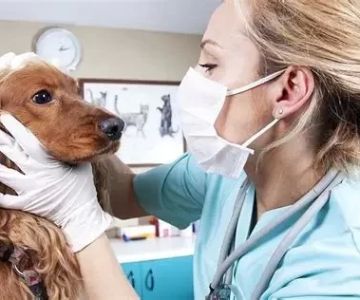- why-monitoring-vital-signs-at-home-matters-for-pets
- vet-approved-metrics-what-to-track-and-why
- best-at-home-vital-sign-monitoring-tools-for-dogs-cats-vet-approved-insights
- real-pet-parents-experiences-with-monitoring-tools
- get-the-right-tools-and-guidance-from-hidden-brook-veterinary
1. Why Monitoring Vital Signs at Home Matters for Pets
As pet owners, we often notice when our furry friends are “off” — maybe they're more lethargic than usual or breathing a bit too fast. But how do we know when it’s actually serious? That’s where at-home vital sign monitoring tools come in. Being able to check your dog or cat’s heart rate, respiration, temperature, or oxygen levels in real time can be a life-saving advantage.
These tools don’t replace veterinary care, but they do help bridge the gap between regular checkups. Whether your pet has a chronic condition like heart disease, you're monitoring recovery after surgery, or you simply want to stay proactive, vet-approved devices allow you to act quickly when something’s wrong. It’s peace of mind for both you and your pet.
2. Vet-Approved Metrics: What to Track and Why
2.1 Heart Rate and Pulse
Monitoring your pet’s heart rate at home helps detect irregularities early. For dogs, a resting heart rate typically ranges from 60–140 bpm (depending on size and breed). For cats, it’s usually 140–220 bpm. Changes outside of this range—especially if paired with behavior shifts—should trigger a vet consultation.
2.2 Respiratory Rate and Effort
A normal resting respiratory rate for dogs and cats ranges from 10–30 breaths per minute. Labored breathing or rapid respiration can indicate conditions such as fluid in the lungs, asthma, or anxiety. Many at-home pet monitors now include sensors that can measure this automatically while your pet sleeps.
2.3 Temperature
An abnormal temperature is one of the earliest indicators of infection or illness. Normal temperature for both cats and dogs typically falls between 100.5°F and 102.5°F. Touch-based thermometers and digital rectal thermometers can provide accurate readings, though some new wearables offer continuous monitoring.
2.4 Blood Oxygen Levels (SpO2)
Pulse oximetry for pets has advanced significantly. Monitoring SpO2 levels is particularly useful for pets with respiratory diseases or post-operative concerns. Values below 95% may suggest oxygen deprivation and require immediate veterinary intervention.
3. Best At‑Home Vital Sign Monitoring Tools for Dogs & Cats – Vet Approved Insights
3.1 PetPace Smart Collar
Used in many veterinary clinics, the PetPace smart collar provides real-time data on temperature, heart rate, respiration, and activity levels. It’s especially popular for monitoring aging pets or those with chronic conditions like arthritis or epilepsy. The companion app allows you to share data directly with your vet.
3.2 iPetCare Thermo Patch
This non-invasive patch sits comfortably on your pet’s skin and transmits continuous body temperature to your phone. It's ideal for pets who hate traditional thermometers. Some models include early-warning alerts for fever or hypothermia.
3.3 VetGuardian Contactless Monitor
This high-tech solution is ideal for anxious pets. The monitor uses radar and thermal imaging to track respiration and heart rate without touching your pet. It’s commonly used for post-surgical care and night monitoring, especially in multi-pet households.
3.4 CheckUp Home Wellness Kit
While not a vital sign monitor in the traditional sense, CheckUp kits include urinalysis and diabetes testing that pairs well with vitals tracking. It’s a quick and cost-effective way to monitor kidney function, blood sugar, and hydration.
4. Real Pet Parents’ Experiences with Monitoring Tools
When Bella, a 9-year-old golden retriever, underwent heart surgery, her family used the PetPace collar to track her post-op progress. “The app sent us an alert when her heart rate spiked overnight,” her owner Sarah recalls. “We took her to Hidden Brook Veterinary the next morning and avoided a potential crisis.”
Meanwhile, Max, a senior cat with hyperthyroidism, began using a temperature patch after several scary vet visits. His owner, Derek, said, “It’s helped us manage his flare-ups better. We’ve avoided multiple emergency appointments thanks to the early detection.”
These aren’t just gadgets—they’re tools that give pet parents confidence and early-warning capability that can make all the difference.
5. Get the Right Tools and Guidance from Hidden Brook Veterinary
Choosing the right at-home vital sign monitoring tools for dogs and cats can feel overwhelming—but you don’t have to figure it out alone. Hidden Brook Veterinary offers expert recommendations, real product reviews, and personalized care plans tailored to your pet’s health needs.
Whether you're managing chronic conditions, post-surgical care, or simply being a proactive pet parent, Hidden Brook Veterinary can help you choose and use the tools that make a difference. With compassionate support and medically-sound advice, you're never more than a heartbeat away from peace of mind.












